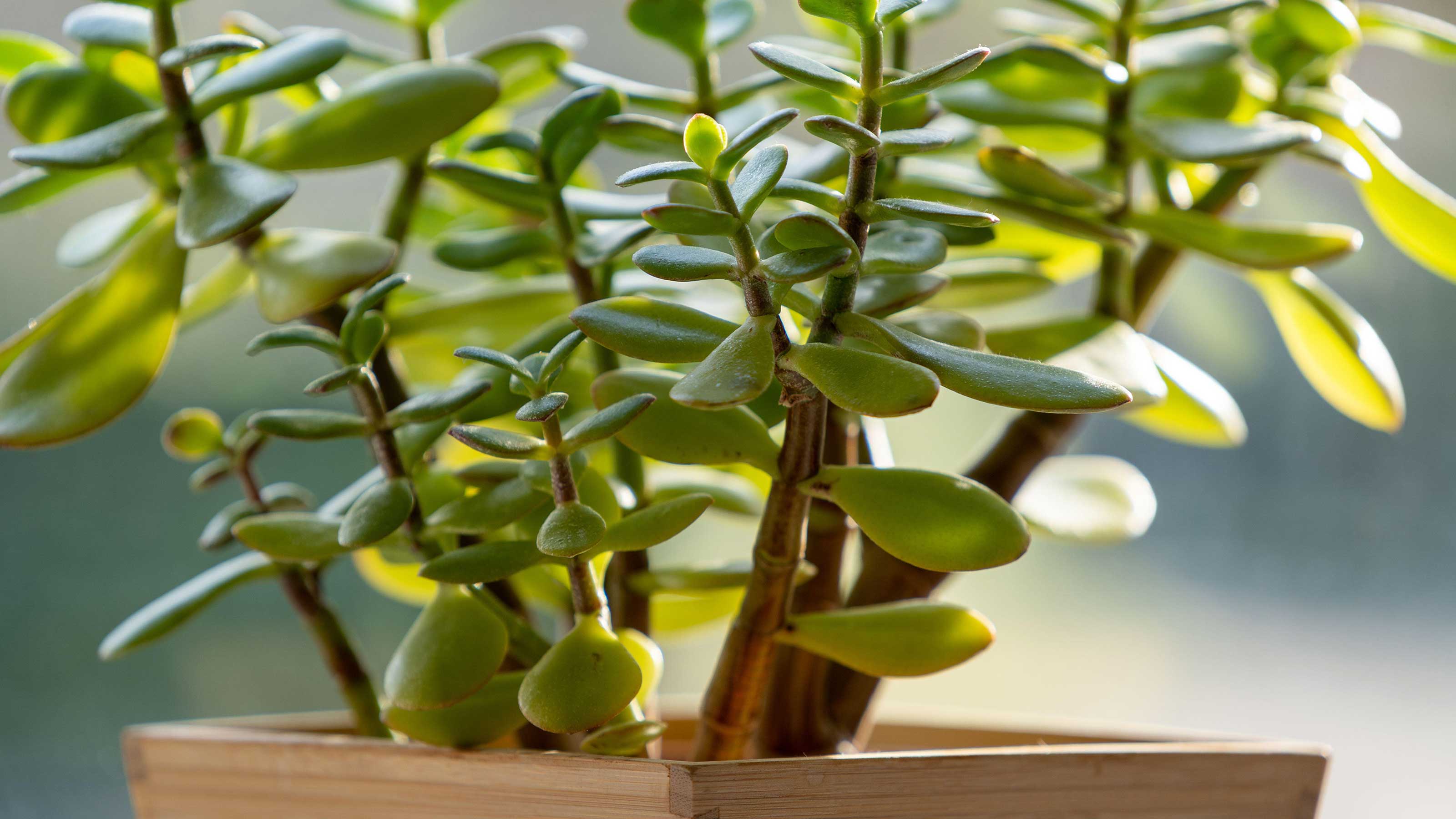
Learning how to care for a jade plant is easy, making them a great choice for beginner plant parents. Otherwise known as Crassula ovata, they are well-loved for their thick, oval-shaped leaves. And, if space allows, they eventually grow into small trees, creating a stunning focal point.
Although they're low-maintenance, if you've recently bought one of these succulents, there are a few things you'll need to get right. That's why, with help from the houseplant experts, we've put together this guide on all the essentials for jade plant care.
Below, you'll find pro tips on pruning, potting soil, lighting requirements, and more. In other words, if you want to keep these brilliant indoor plants happy and healthy, you've come to the right place.
How to care for a jade plant, according to the experts
While these are easy houseplants to care for, providing an optimum growing environment will help your jade plant truly flourish. Although rare, you may even be rewarded with a show of their small, star-shaped blooms.
1. Choose a suitable soil
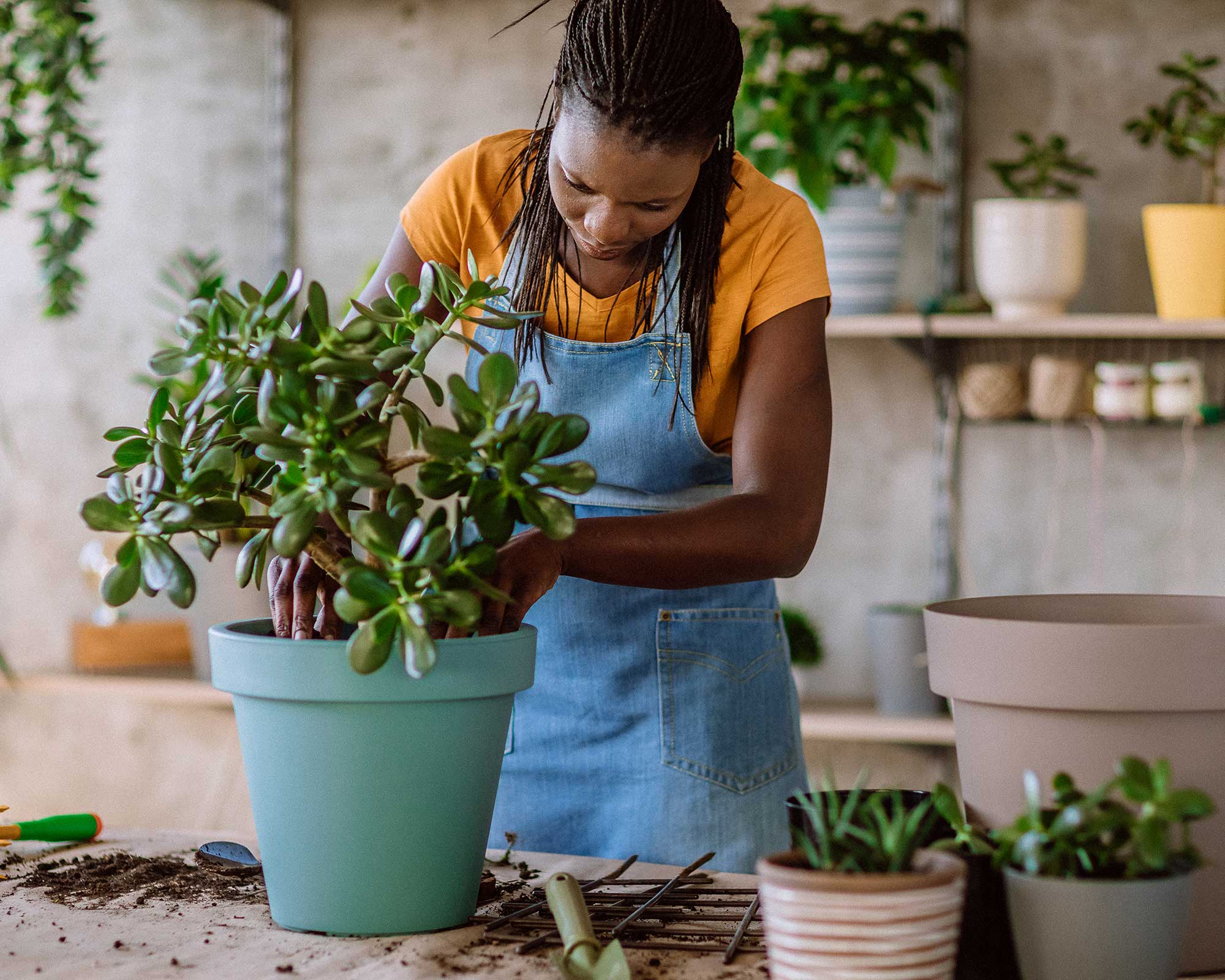
The first thing you need to know about caring for houseplants is that your choice of potting soil matters.
Julia Omelchenko, a resident botany expert at Plantum, notes how jade plants need a mix that's loose and very well-draining. She says, "This will ensure that the plant won't get waterlogged and its roots won't be as prone to rot."
Kayla Gajdascz, the co-founder of Mental Houseplants, recommends using a pre-mixed succulent or cactus soil. Alternatively, you can make your own by mixing regular potting soil with sand or perlite to improve drainage, she says.
The succulent potting mix from Miracle-Gro at Amazon is a good option. Or, try combining this well-rated Harris potting soil with worm castings from Amazon, with Perfect Plants' organic perlite (also from Amazon).
"Ensure your jade plant is in a pot with adequate drainage holes to prevent water from sitting at the bottom," Kayla adds.
2. Provide plenty of sunshine
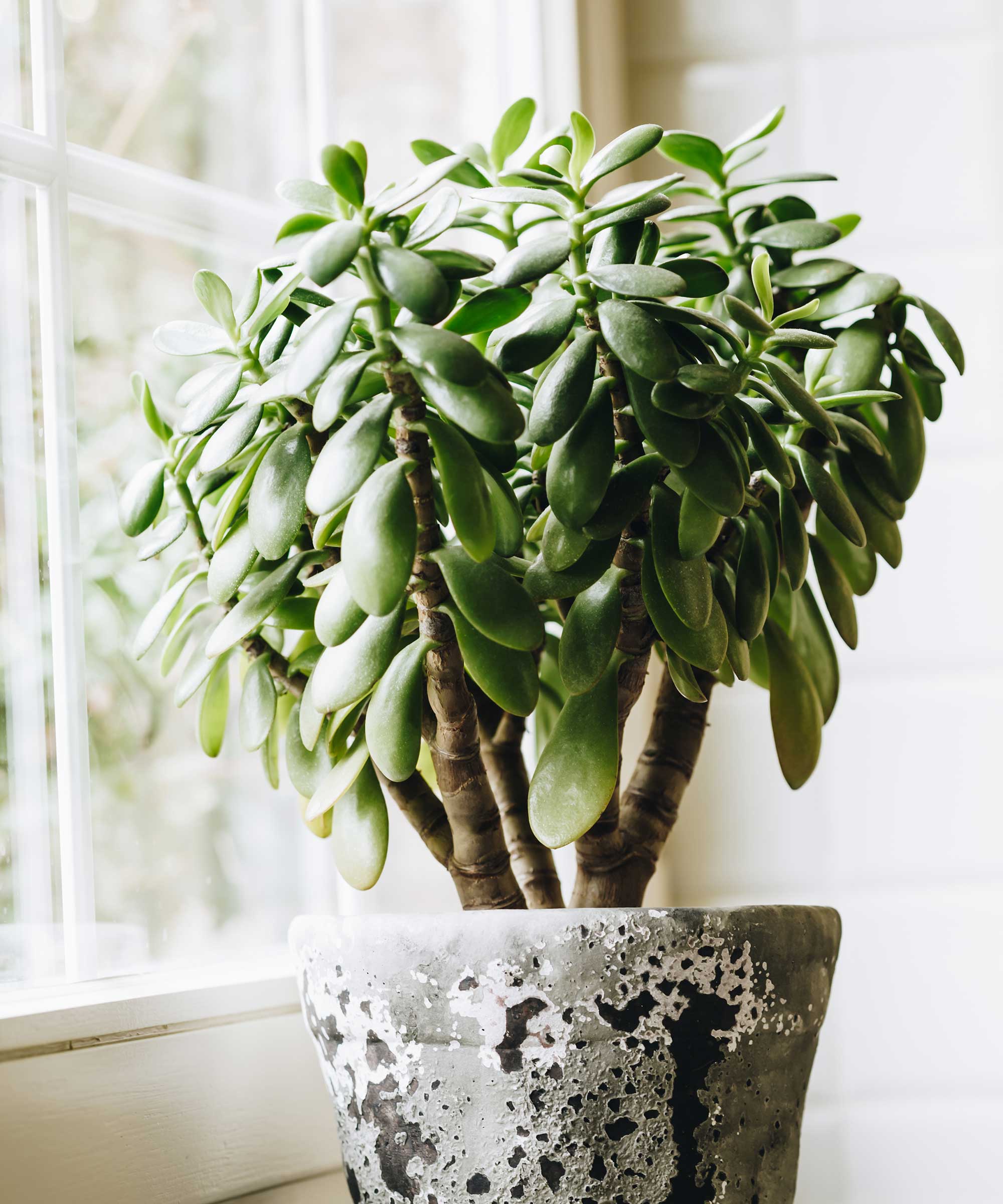
If you've researched how not to kill houseplants, you'll know getting the lighting right is a key factor.
Kiersten Rankel, a plant biologist with Greg, a houseplant-care app, recommends placing your jade plant in the sunniest indoor spot you have. South or west-facing windows are perfect to mimic their desert habitat," she says.
Do remember to rotate your plants occasionally for even light exposure.
"If the plant starts to look leggy, or its leaves lose their vibrant green color, it might not be getting enough light," adds Kayla.
3. Don't overwater
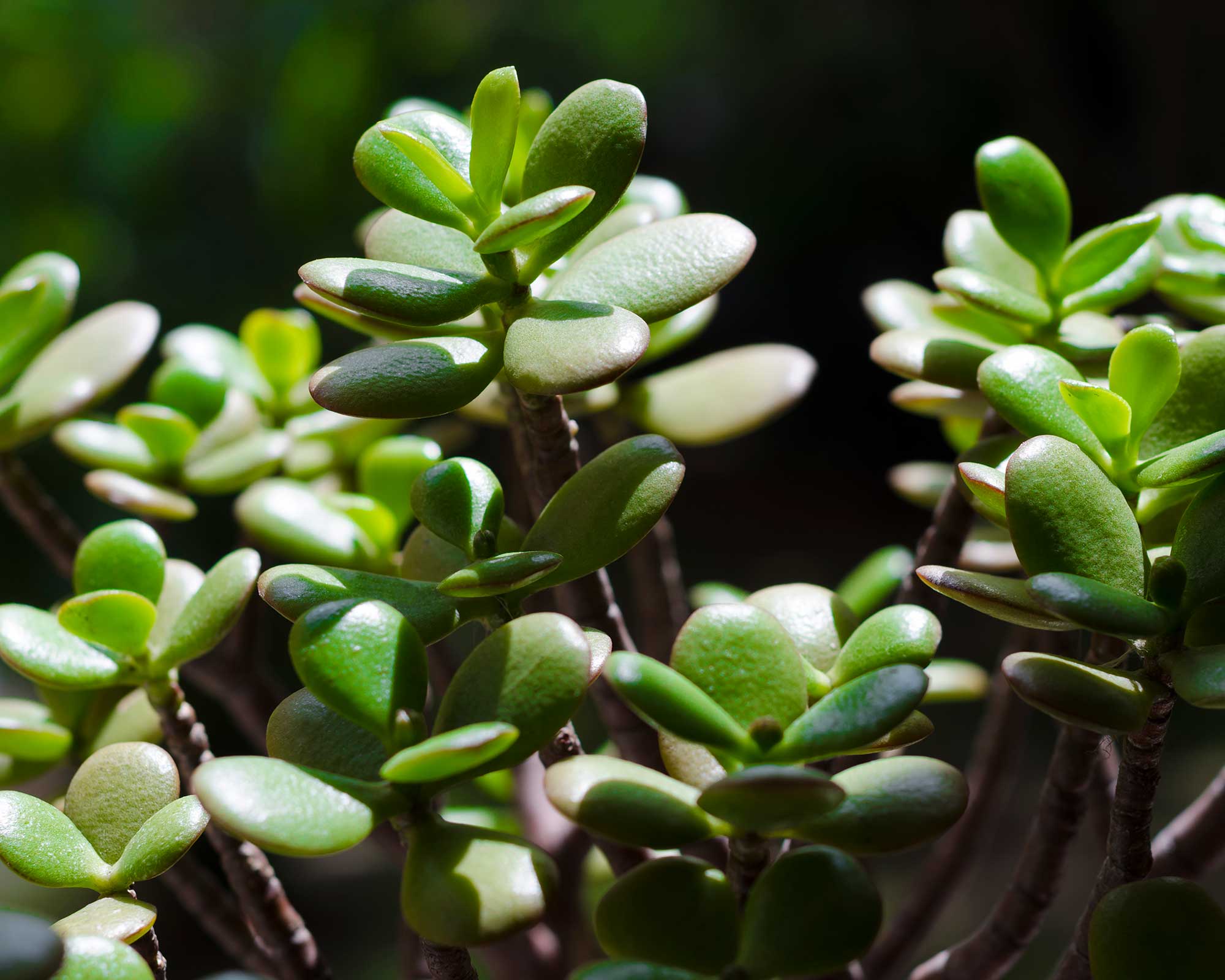
As Kiersten points out, jade plants store moisture in their thick leaves and stems. Overwatering them should definitely be avoided, just like when caring for fiddle leaf figs.
Kayla recommends allowing the soil to dry out completely between watering your jade. "In the summer, watering every two to three weeks is sufficient, while in the winter, you can reduce watering to once a month or less. Always check the topsoil for dryness before watering."
Julia adds, "The jade plant needs no misting; in fact, high humidity in general makes it prone to rot."
4. Keep them warm
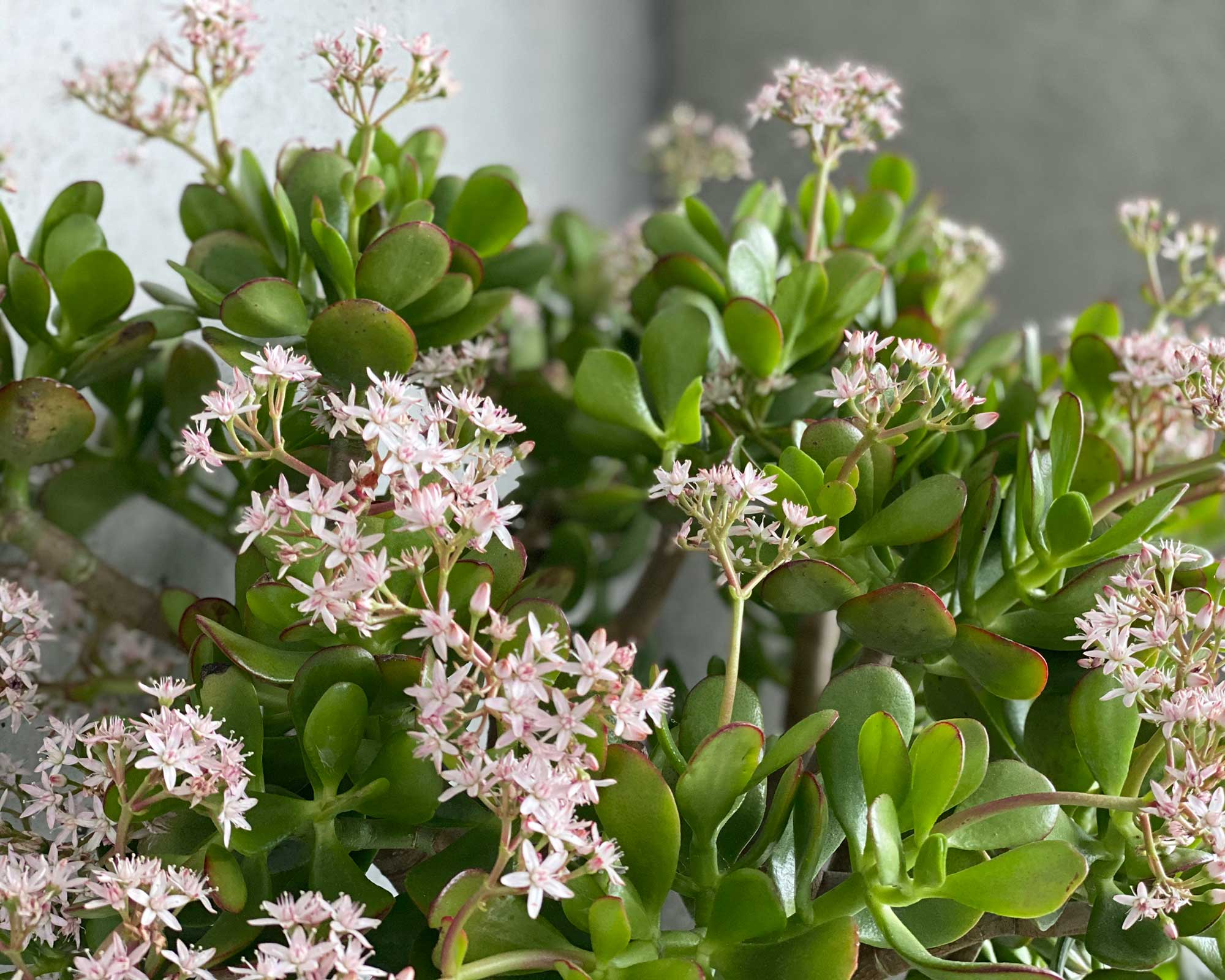
These houseplants are native to South Africa, so it's no surprise they like to stay relatively warm. "Cooler periods can stall growth and contribute to root rot if the soil stays moist," warns Kiersten.
Kayla says, "Jade plants prefer room temperatures from 65–75° Fahrenheit during the day and cooler at night, but not below 50°F."
House plant expert Paris Lalicata, from The Sill, also recommends avoiding drafts from air conditioning and heating units.
5. Prune to keep them compact
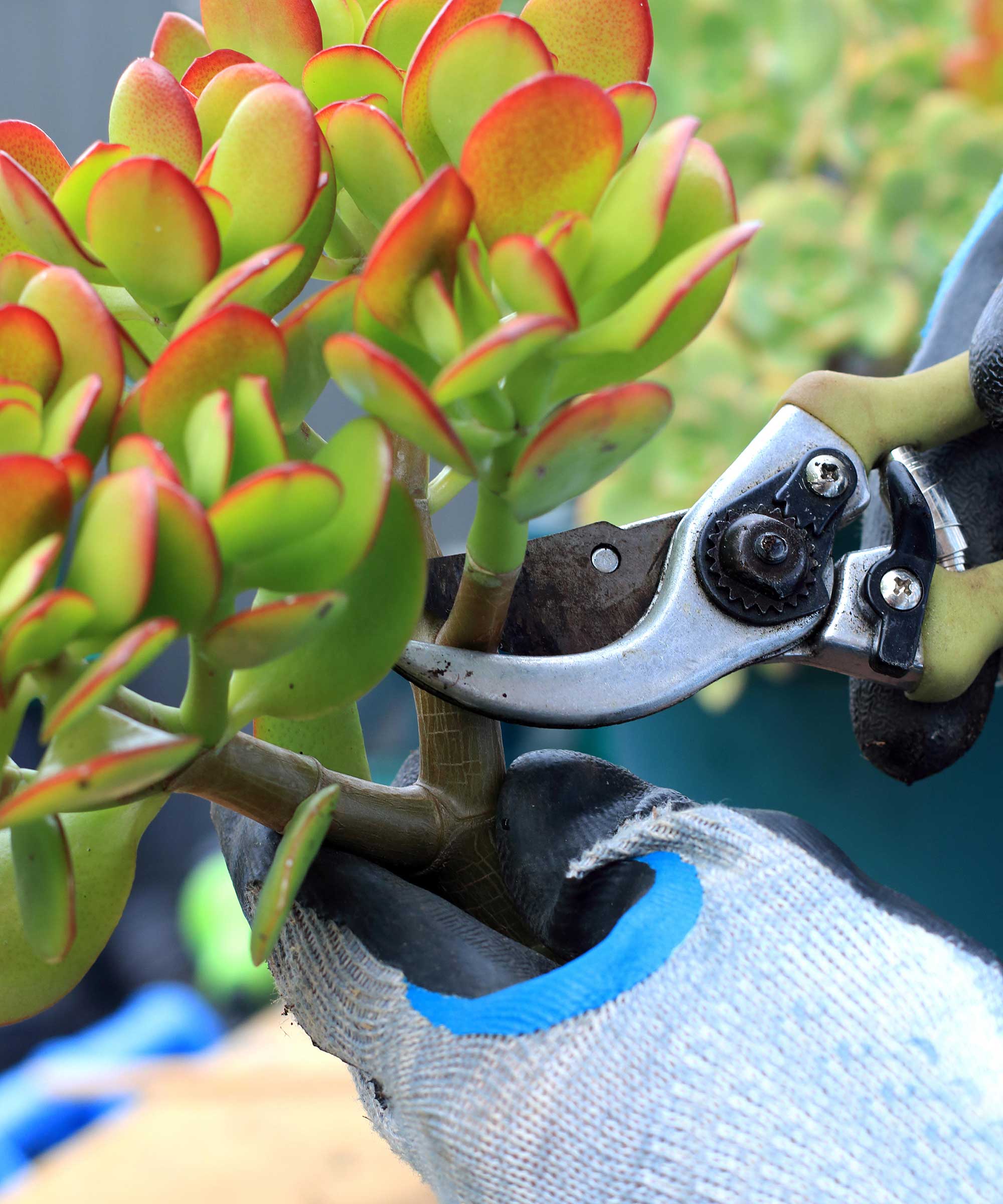
Kayla notes how pruning jade plants can help maintain a compact, bushy shape and encourage fuller growth. "Use clean, sharp scissors or pruning shears to remove any leggy branches and dead leaves, or to shape the plant," she says.
Gonicc 8" professional pruners from Amazon are perfect for the job, and have great customer reviews.
When pruning any plant, make your cuts at an angle, just above a growth node or a healthy leaf to encourage strong regrowth. Spring, when the plant is actively growing, is a good time to carry out this task to help your jade recover quickly.
6. Repot to encourage more growth
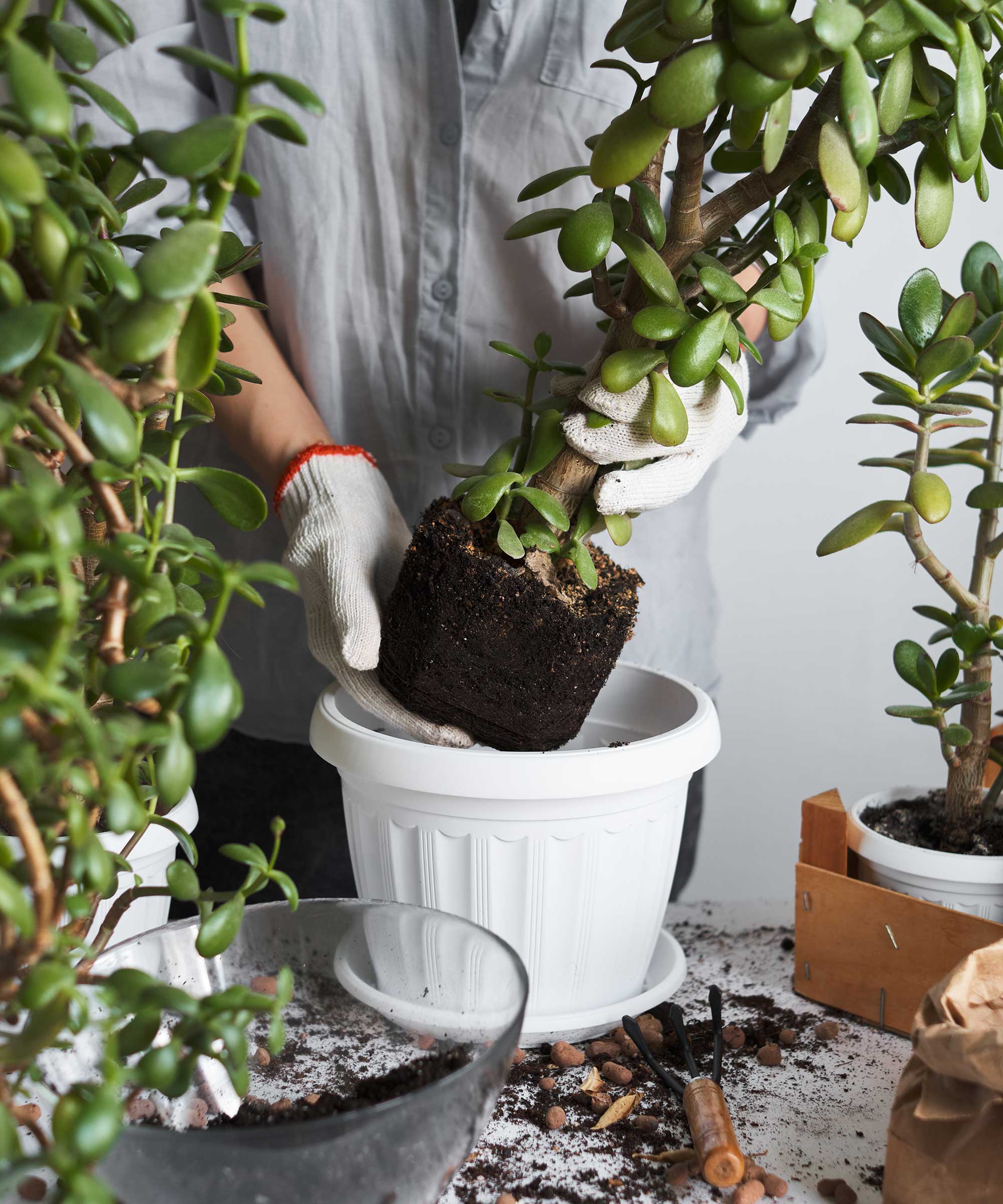
Jades can be great houseplants for small spaces, bringing you joy for many years, especially if you prune them regularly. However, if you occasionally repot them into larger containers, they can eventually grow up to 6 ft tall.
Juliette Vassilkioti, founder of My City Plants, recommends repotting them every two to three years. "Use a pot that is 1–2 inches larger in diameter than the current pot," she says. Ensure it has drainage holes, she adds.
"Be sure to only upgrade the planter size when the plant has become pot-bound in its current planter," adds Paris. Telltale signs include roots emerging through the drainage holes, the soil drying out faster than usual, and stunted growth.
Bear in mind that larger plants need a relatively heavy pot to prevent them from toppling over. Save yourself a trawl with the large decorate pots for indoor plants for under $80 rounded up by our expert shoppers.
7. Consider adding a fertilizer
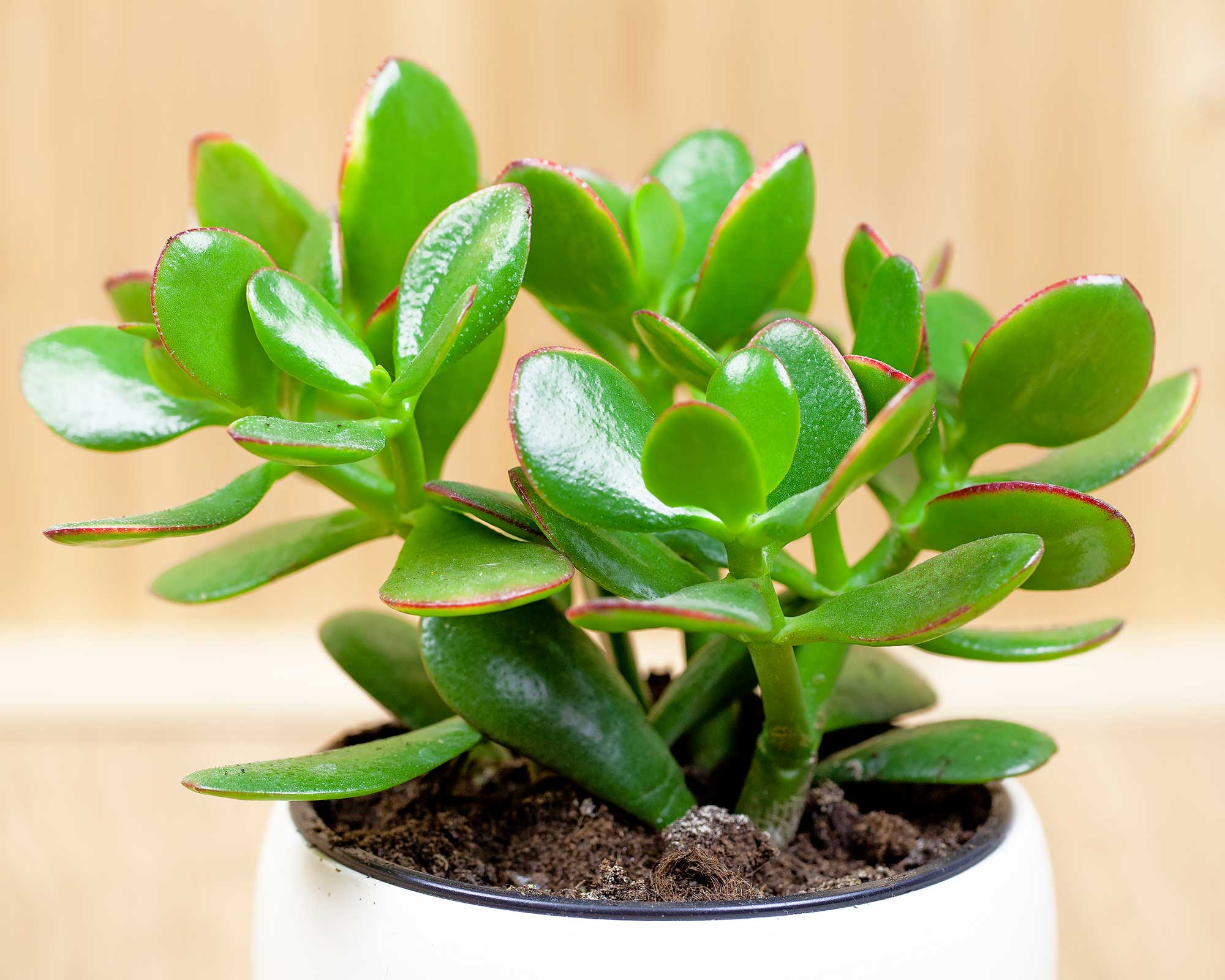
"Each repot will provide more than enough nutrition, so adding extra fertilizer isn’t required," says Kiersten.
However, if you're keeping your jade in the same container for a while, you may wish to give it a boost during the growing season. Consider using a slow-release fertilizer that's specifically developed for succulents such as this granular plant food for succulents and cacti from The Grow Co at Amazon with thousands of 4.5+ star reviews.
"Avoid fertilizing in the winter when the plant's growth naturally slows," says Kayla.
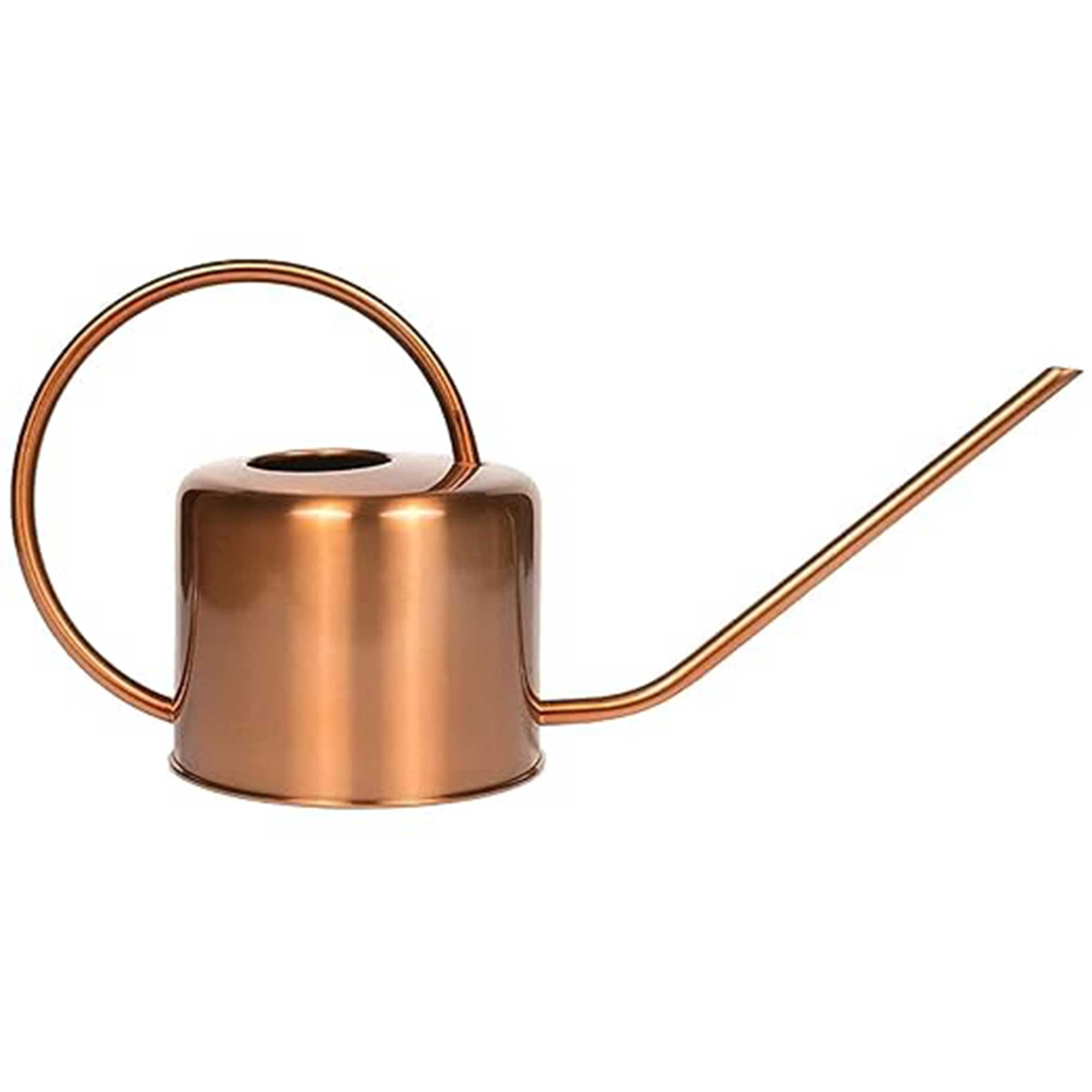
Available in an elegant copper or cute teal design, this small watering can is perfect for carefully hydrating your jade plant, as well as your other houseplants.
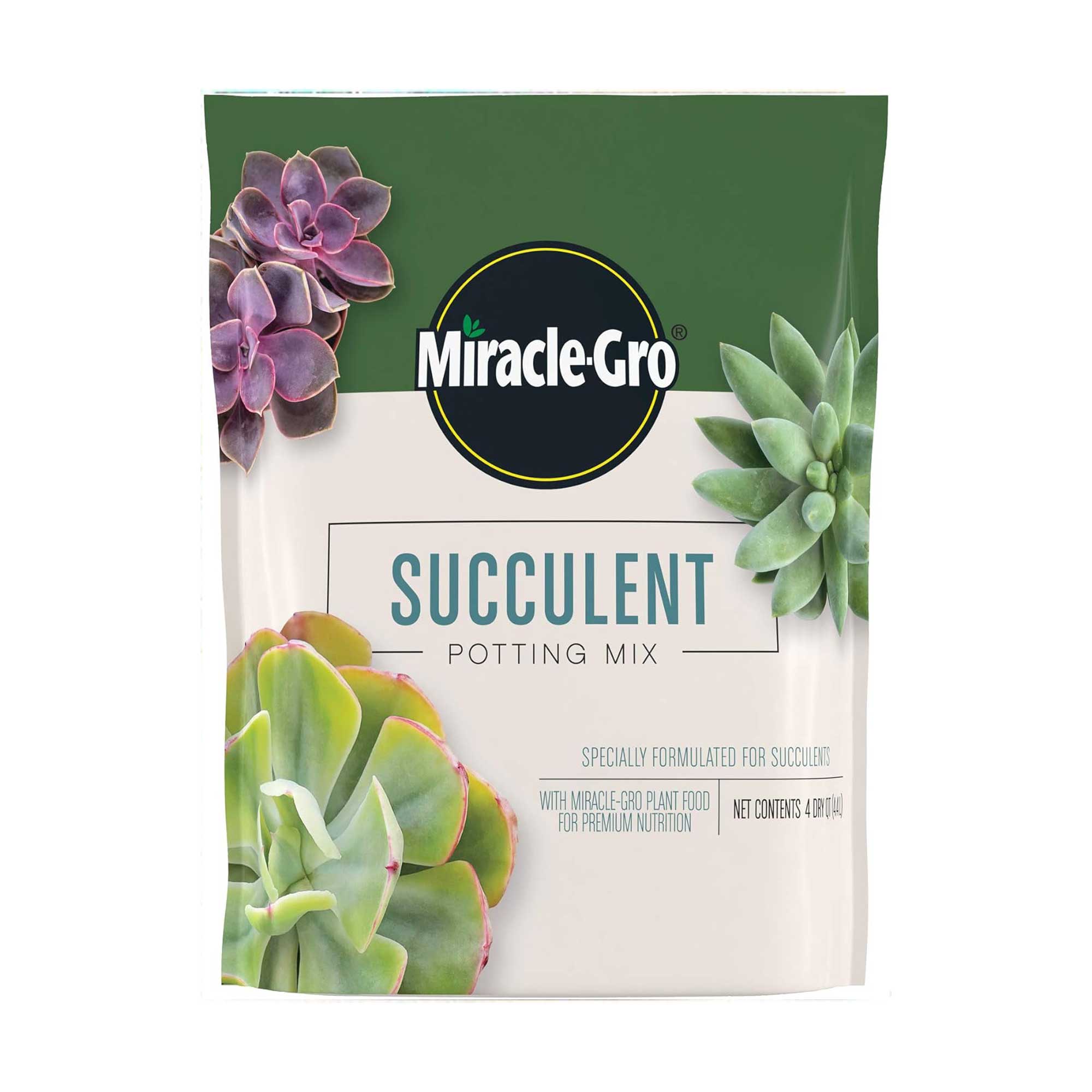
A highly-rated, fast-draining, premium potting medium that's ideal for planting up jade plants and other succulents in your collection.
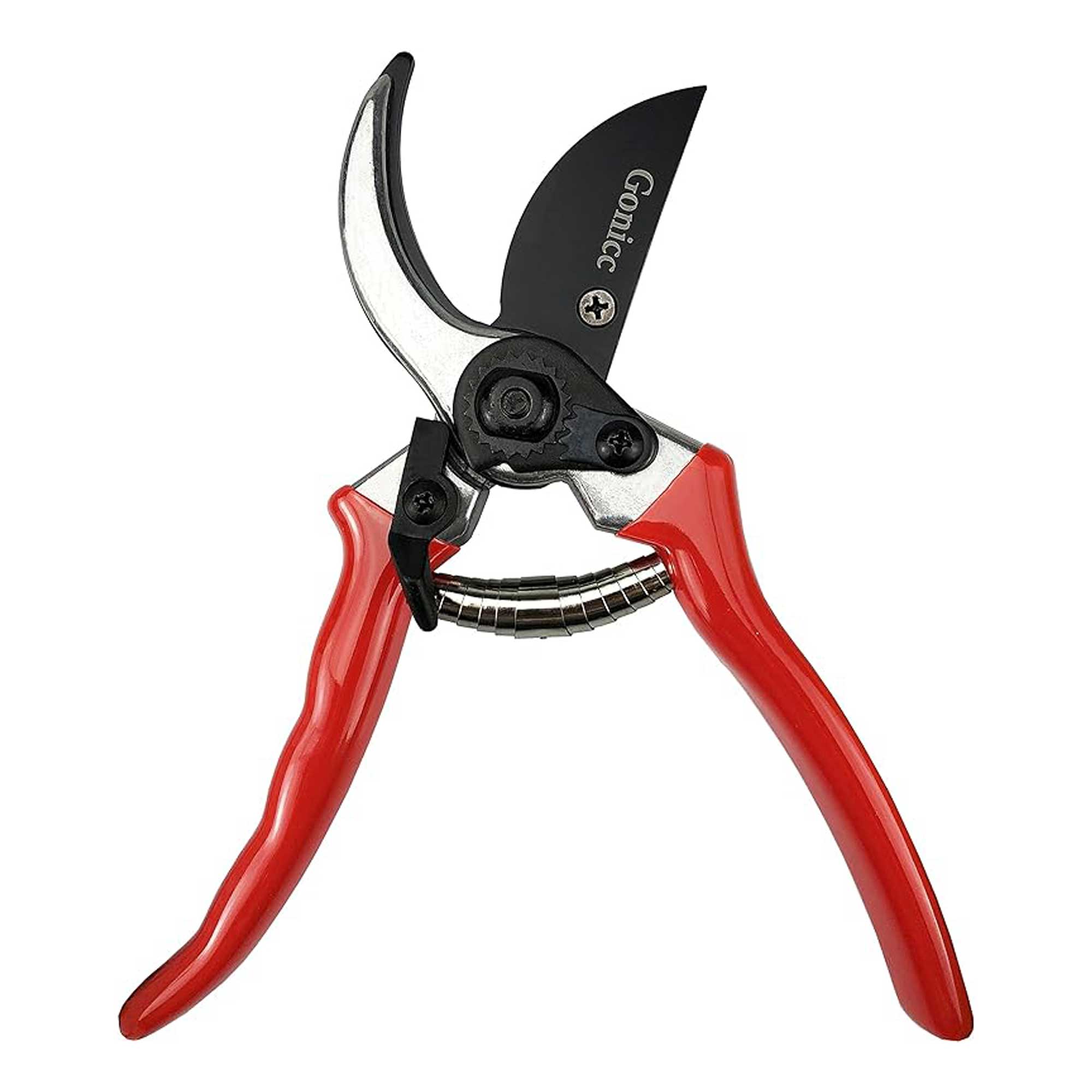
An essential tool for tidying plants both indoors and out – these well-rated pruners feature a sharp, steel blade, plus non-slip handles that are comfy to use.
FAQs
Why are the leaves dropping off my jade plant?
One of the most common problems when caring for jades is the fleshy leaves falling off. There are a few reasons this can happen.
First, check the temperature. As Julia points out, exposing the succulent to temperatures below 50°F will stress the plant and may result in defoliation.
Address your watering regime, too. If the leaves and stems also feel soft and mushy, then you'll need to water your jade plant less often. Prune away the damaged areas. You may need to repot it into a fresh, dry mix.
Houseplant pests, such as mealybugs, can also cause this issue, so keep an eye out. If you spot them, try carefully wiping them from the plants using a cloth dampened with rubbing alcohol (available from Amazon). It's always a good idea to do a test first on just a couple of leaves, to ensure it doesn't harm your plants.
Are jade plants toxic?
Unfortunately, jades are not pet-friendly houseplants. "All parts of the jade plant are toxic when consumed," warns Julia. "Make sure to keep it out of reach of pets and children."
Whether you're gardening in an apartment or looking for more easy-care additions, consider shopping for a spider plant, too. Alternatively, try caring for an air plant – a spiky, colorful option that doesn't need soil to grow.






